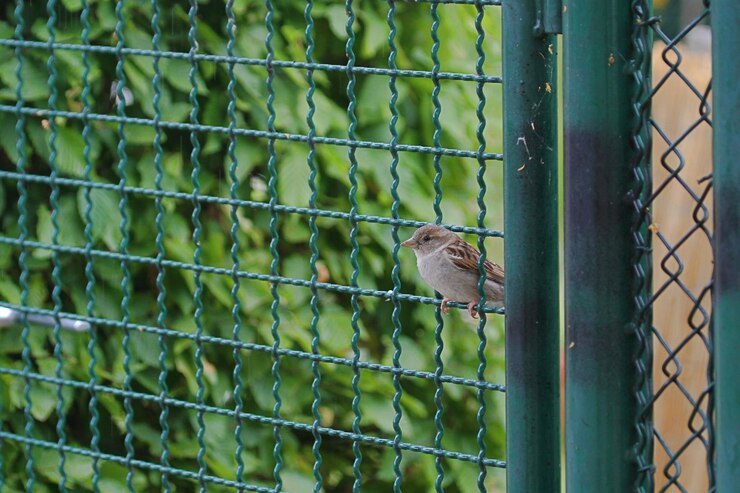In today’s fast-paced urban environments, balconies offer a refreshing escape—a space to relax, grow plants, or simply enjoy fresh air. However, one recurring nuisance disrupts this peace: birds. Pigeons, crows, and other birds often invade balconies, leaving behind droppings, feathers, and potential health risks. The most effective and humane way to tackle this issue is balcony bird netting.
Balcony bird netting has become a go-to solution for apartment residents and building managers across cities. It’s a simple yet highly effective method to keep birds away without harming them, preserving the cleanliness and functionality of your balcony.
Why Is Bird Netting Needed on Balconies?
Urban birds, especially pigeons, are notorious for roosting on balconies. Here are some common problems they cause:
- Health Hazards: Bird droppings carry bacteria, fungi, and parasites that can cause diseases such as histoplasmosis, salmonella, and respiratory issues.
- Unhygienic Environment: Constant droppings and nesting materials lead to foul smells, stains, and insect infestations.
- Property Damage: Acidic droppings can corrode balcony railings, air conditioning units, and walls.
- Noise Disturbance: Birds often make noise, especially during early morning hours, disrupting peace and sleep.
- Clogged Drainage: Feathers, nests, and droppings can block balcony drains, leading to water accumulation and leakage problems.
Installing bird netting addresses all these issues effectively and humanely.
What Is Balcony Bird Netting?
Bird netting is a strong, lightweight mesh installed across open balcony areas to prevent birds from entering. It acts as a physical barrier, blocking access while maintaining airflow and visibility. The netting is usually made from UV-stabilized polyethylene or nylon, ensuring durability and weather resistance.
The nets are typically transparent or color-matched to the building to blend in without affecting the aesthetics of your home.
Features and Benefits of Bird Netting for Balconies
- 100% Bird Proofing
Once installed, the netting completely blocks birds from accessing the balcony. It is particularly effective against pigeons, sparrows, and crows. - Safe and Humane
Netting doesn’t harm birds. It simply restricts their access, making it a preferred choice for animal lovers and eco-conscious residents. - Durable and Long-lasting
High-quality bird nets are resistant to UV rays, rain, and wind, making them suitable for long-term use without frequent replacements. - Low Maintenance
Once installed, the netting requires little to no upkeep. It can be cleaned easily with water when required. - Customizable Installation
Bird netting can be tailored to any balcony size or shape. It can be installed around grills, windows, and even air conditioning units. - Improves Hygiene
With birds kept away, balconies remain cleaner and safer for children, pets, and elderly family members. - Cost-Effective
Compared to the damage and cleaning costs caused by birds, bird netting is a one-time, affordable solution.
How Is Bird Netting Installed on Balconies?
Professional installation is recommended for bird netting to ensure safety, proper tension, and aesthetic appeal. The installation process generally includes:
- Site Assessment: A technician inspects the balcony layout and size.
- Customization: The net is cut and prepared according to the dimensions of the balcony.
- Anchoring: Using hooks, nails, or clips, the net is securely fastened to the balcony frame, railing, or ceiling.
- Tensioning: The net is stretched tightly to prevent sagging and to ensure birds cannot squeeze through.
- Finishing: The edges are sealed, and excess netting is trimmed for a neat finish.
Installation usually takes 1–2 hours depending on the size and complexity of the balcony.
Types of Bird Netting Available
- Transparent Netting: Best for those who want an almost invisible barrier. Blends well with glass railings or scenic views.
- Black or White UV-Stabilized Netting: Offers better durability and visibility for safety. Common in residential buildings and industrial settings.
- Fire-Retardant Netting: Suitable for high-rise buildings where fire safety is a concern.
Common Applications Beyond Balconies
While primarily used in balconies, bird netting is also widely used in:
- Apartment ventilators and ducts
- Windows and ledges
- Rooftops and terraces
- Warehouse openings
- Hospitals, schools, and food production areas
Precautions and Maintenance Tips
- Inspect the net regularly for wear, especially after storms or strong winds.
- Clean droppings from the outer surface using water or mild soap.
- Ensure no birds are trapped behind the net after installation.
- Replace or repair any torn sections immediately.
Conclusion
Birds may be a beautiful part of nature, but when they invade our living spaces, they bring hygiene issues, damage, and inconvenience. Balcony bird netting offers a smart, humane, and practical solution for urban homeowners who wish to enjoy their balconies without interference.
Whether you live in a high-rise apartment or a low-floor flat, bird netting ensures that your balcony remains a clean, safe, and peaceful extension of your home. It’s an investment in comfort, cleanliness, and overall wellbeing—something every city dweller deserves.

